
Morwenstow is a civil parish in north Cornwall, England, United Kingdom. The parish abuts the west coast, about six miles (10 km) north of Bude and within the Cornwall Area of Outstanding Natural Beauty (AONB).

Morwenna is the eponymous patron saint of Morwenstow, a civil parish and village in north Cornwall, UK. Her name is thought to be cognate with Welsh morwyn "maiden", although the first name is also used in Wales and Brittany and said to be composed of "Mor" and "Gwenn", meaning "White sea" in both Welsh and Breton.

St Peter's Church is in the small hamlet of Aston-by-Sutton, Cheshire near to the town of Runcorn. The church is recorded in the National Heritage List for England as a designated Grade I listed building. It is an active Anglican parish church in the diocese of Chester, the archdeaconry of Chester and the deanery of Great Budworth. It is one of three parish churches in the parish of Aston-by-Sutton, Little Leigh and Lower Whitley. The other two being St Michael and All Angels, Little Leigh and St Luke, Lower Whitley. The three were previously individual parishes united in a benefice along with St Mark, Antrobus. The listing describes it as "a most pleasing late 17th to early 18th-century church, inside and out". The church stands in a relatively isolated position in the south side of Aston Lane in the hamlet.
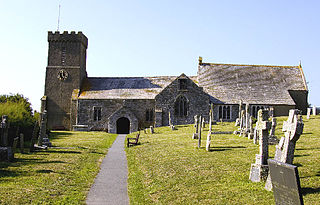
St Carantoc's Church, Crantock is in the village of Crantock, Cornwall, England. Since 1951 the church has been designated as a Grade I listed building. It is an active Anglican parish church in the diocese of Truro, the archdeaconry of Cornwall and the deanery of Pydar. Its benefice is combined with that of St Cubert.

St John the Baptist's Church is a redundant Anglican church in the village of Stanwick St John, North Yorkshire, England. It is recorded in the National Heritage List for England as a designated Grade I listed building, and is under the care of the Churches Conservation Trust. The site of the church is recognised as a Scheduled Monument, and it stands within the earthworks of Stanwick Camp, a settlement originating in the early Iron Age.

St Anne's is a church in the village of Woodplumpton in Lancashire, England. It is an active Anglican parish church in the Diocese of Blackburn, and the archdeaconry of Lancaster, and the deanery of Garstang. The church is recorded in the National Heritage List for England as a designated Grade II* listed building. The churchyard at St Anne's is the supposed burial place of a 17th-century alleged witch named Meg Shelton.

St John the Baptist's Church is a redundant Anglican church in the village of Wakerley, Northamptonshire, England. It is recorded in the National Heritage List for England as a designated Grade I listed building, and is under the care of the Churches Conservation Trust. It stands in an elevated position overlooking the Welland Valley.

All Saints Church is a historic Anglican church in the village of Aldwincle, Northamptonshire, England. It is recorded in the National Heritage List for England as a designated Grade I listed building, and is under the care of The Churches Conservation Trust.

St Swithun's Church is a historic Anglican church in the village of Brookthorpe, Gloucestershire, England under the care of The Churches Conservation Trust. It is recorded in the National Heritage List for England as a designated Grade II* listed building.
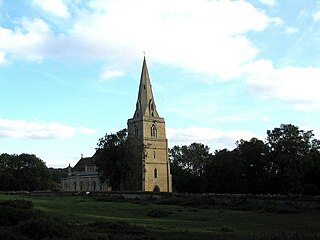
St Peter's Church is an Anglican church in the village of Deene, Northamptonshire, England. It is recorded in the National Heritage List for England as a designated Grade II* listed building, and is under the care of The Churches Conservation Trust and East Northamptonshire Council.

St John the Baptist's Church is a redundant Anglican church in the village of Avon Dassett, Warwickshire, England. It is recorded in the National Heritage List for England as a designated Grade II* listed building, and is under the care of The Churches Conservation Trust.

St Leonard's Church is an Anglican church in the village of Apethorpe in Northamptonshire, England. It is an active parish church in the Diocese of Peterborough. It has been designated a Grade I listed building by English Heritage.

All Saints Church is in the village of Berrington, Shropshire, England. It is an active Anglican parish church in the deanery of Condover, the archdeaconry of Ludlow, and the diocese of Hereford. Its benefice is united with those of twelve other parishes to form the Wenlock Team of Parishes. The church is recorded in the National Heritage List for England as a designated Grade I listed building.
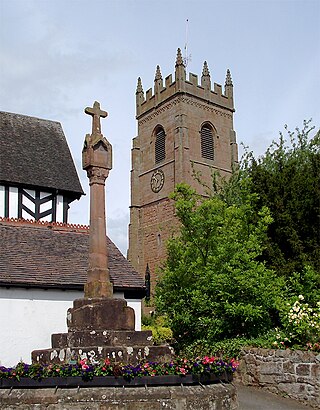
All Saints Church is in the village of Claverley, Shropshire, England. It is an active Anglican parish church in the deanery of Bridgnorth, the archdeaconry of Ludlow, and the diocese of Hereford. Its benefice is united with that of Holy Innocents, Tuck Hill. The church is recorded in the National Heritage List for England as a designated Grade I listed building.

St Peter's Church is in the grounds of Cound Hall, Cound, Shropshire, England. It is an active Anglican parish church in the deanery of Condover, the archdeaconry of Ludlow, and the diocese of Hereford. Its benefice is united with those of 13 other parishes to form the benefice of Wenlock. The church is recorded in the National Heritage List for England as a designated Grade I listed building.

St Andrew's Church is in the village of Great Ness, Shropshire, England. It is an active Anglican parish church in the deanery of Ellesmere, the archdeaconry of Salop, and the diocese of Lichfield. Its benefice is united with those of St Martin, Little Ness, and St John the Baptist, Ruyton-XI-Towns. The church is recorded in the National Heritage List for England as a designated Grade I listed building.
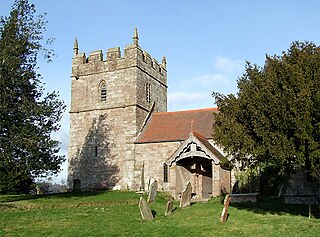
Holy Trinity Church is in the village of Holdgate, Shropshire, England. It is an active Anglican parish church in the deanery of Ludlow, the archdeaconry of Ludlow, and the diocese of Hereford. Its benefice is united with those of St Peter, Diddlebury, Broadstone Church, St Michael, Munslow, and St Catherine, Tugford. The church is recorded in the National Heritage List for England as a designated Grade I listed building. It stands in the former southwest bailey of Holdgate Castle.

St Piran's Church is an active Anglican parish church in Perranarworthal, Cornwall, England. It is part of a united benefice consisting of eight churches, the Eight Saints Cluster, in the parishes of Stithians with Perran-Ar-Worthal and Gwennap. The benefice has four licensed clergy and four readers. The church, dedicated to Saint Piran, is in the Carnmarth, North deanery, the archdeaconry of Cornwall and the Diocese of Truro. The church was granted Grade II* listed status in May 1967. The churchyard contains several listed chest tombs and headstones.

St Germanus' Church is a Church of England church in Rame, Cornwall, England, UK. Much of the existing church dates to the 13th and 15th centuries. It has been Grade I listed since 1960.
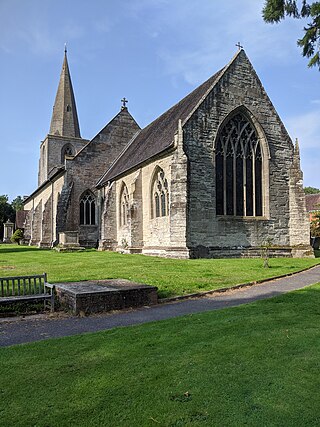
The Church of St Mary Magdalene is an Anglican church in the village of Tanworth-in-Arden, in Warwickshire, England, and in the Diocese of Birmingham. The building dates from the 13th and 14th centuries, with modifications in the 18th and 19th centuries. It is Grade I listed.

























